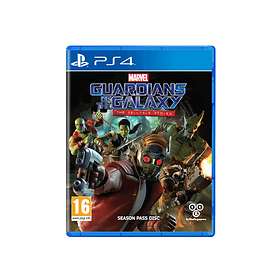

PS4 Pro also guns for 4K with a similar DRS range to Xbox One X, the difference being that the dynamic pixel count is usually lower. It was also good to see that texture quality, anisotropic filtering, shadows and even draw distance are improved over the base Xbox One. Image clarity is massively improved and those telltale hair and fur artefacts are far less of an issue. Moving onto the enhanced last-gen machines, Xbox One X is a genuine surprise, with a huge increase in image quality - as you would expect from a 1440p-1890p dynamic resolution range.

Owing to the temporal anti-aliasing in play, the lower the resolution goes, the less distinct the picture is but it's still a good-looking game: only hair and fur elements genuinely suffer. Reducing resolution as well as frame-rate is another obvious way that Guardians of the Galaxy can scale: so, the base PS4 renders with a dynamic resolution range of around 900p to 972p, while Xbox One drops down to 720p (DRS is a possibility here but all counts came in at 720p, curiously). It's 30fps and that's your lot, similar to Xbox Series S. Obviously, there are going to changes from the current-gen console experience - so the option to choose between a 30fps quality mode and a 60fps performance alternative is off the table. All of which raises the question: just how do the last-gen machines cope with the game? In a world where PS5 and Series X struggle to maintain 1080p60 in performance mode, can any PS4 or Xbox One machine deliver a good experience? The game itself is simply terrific and genuine highlight of 2021 - but equally obvious is that the Dawn Engine is demanding on console hardware. Guardians of the Galaxy left a great impression after our tests on PlayStation 5 and Xbox Series X.


 0 kommentar(er)
0 kommentar(er)
